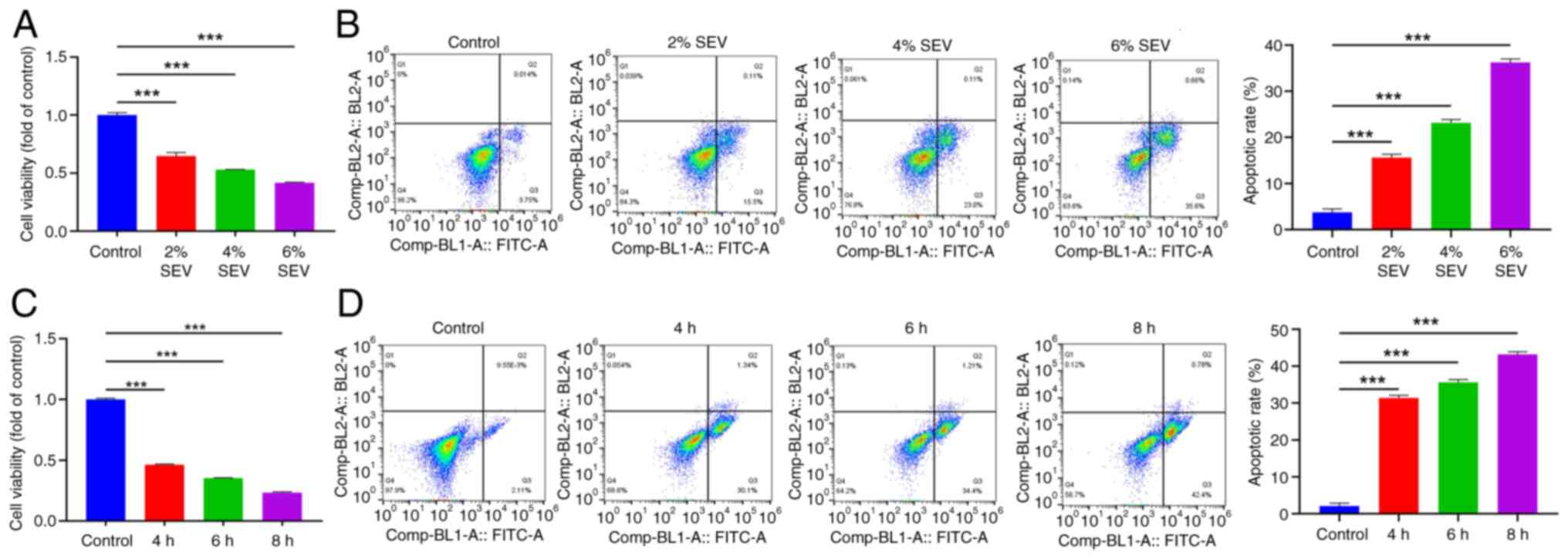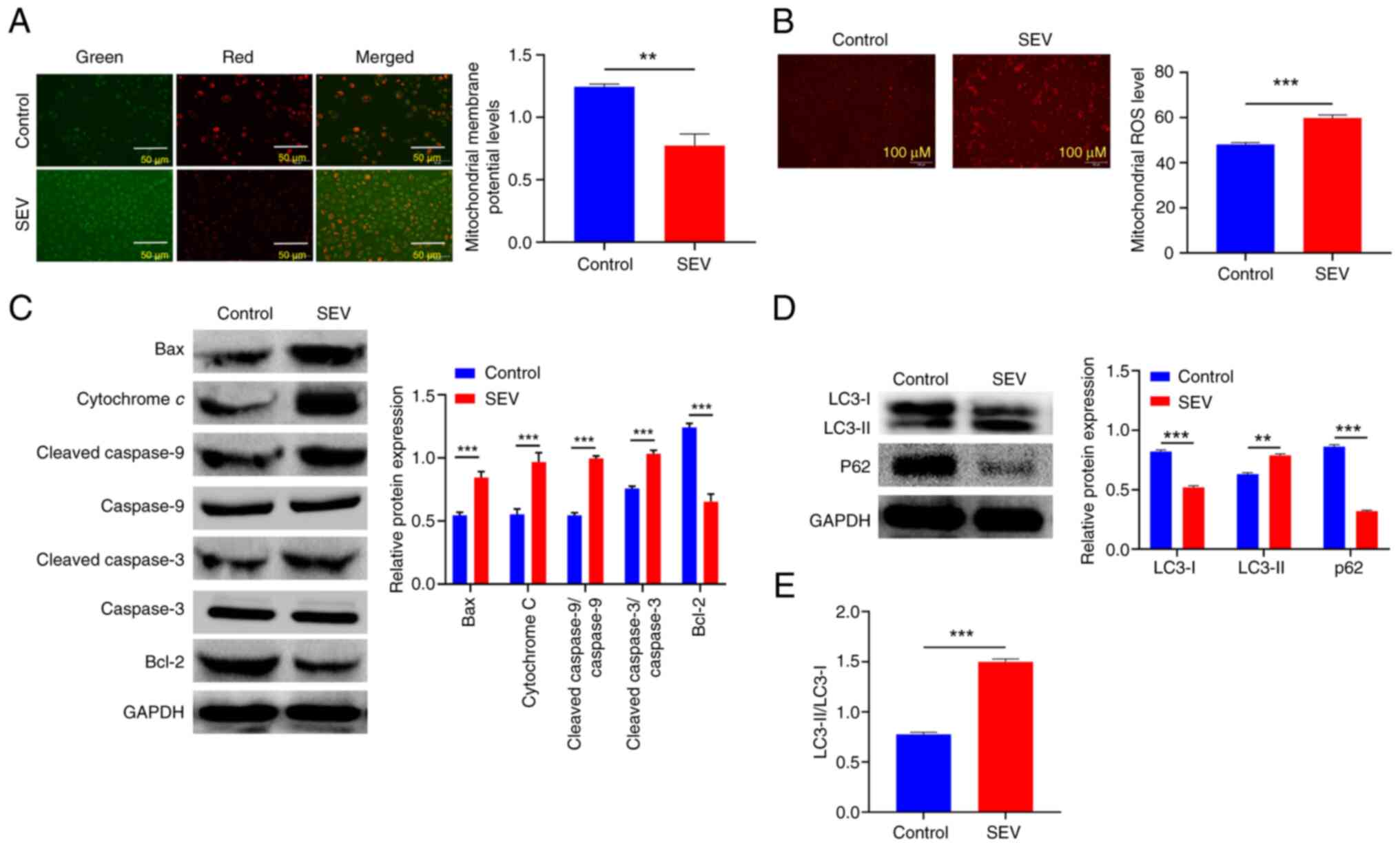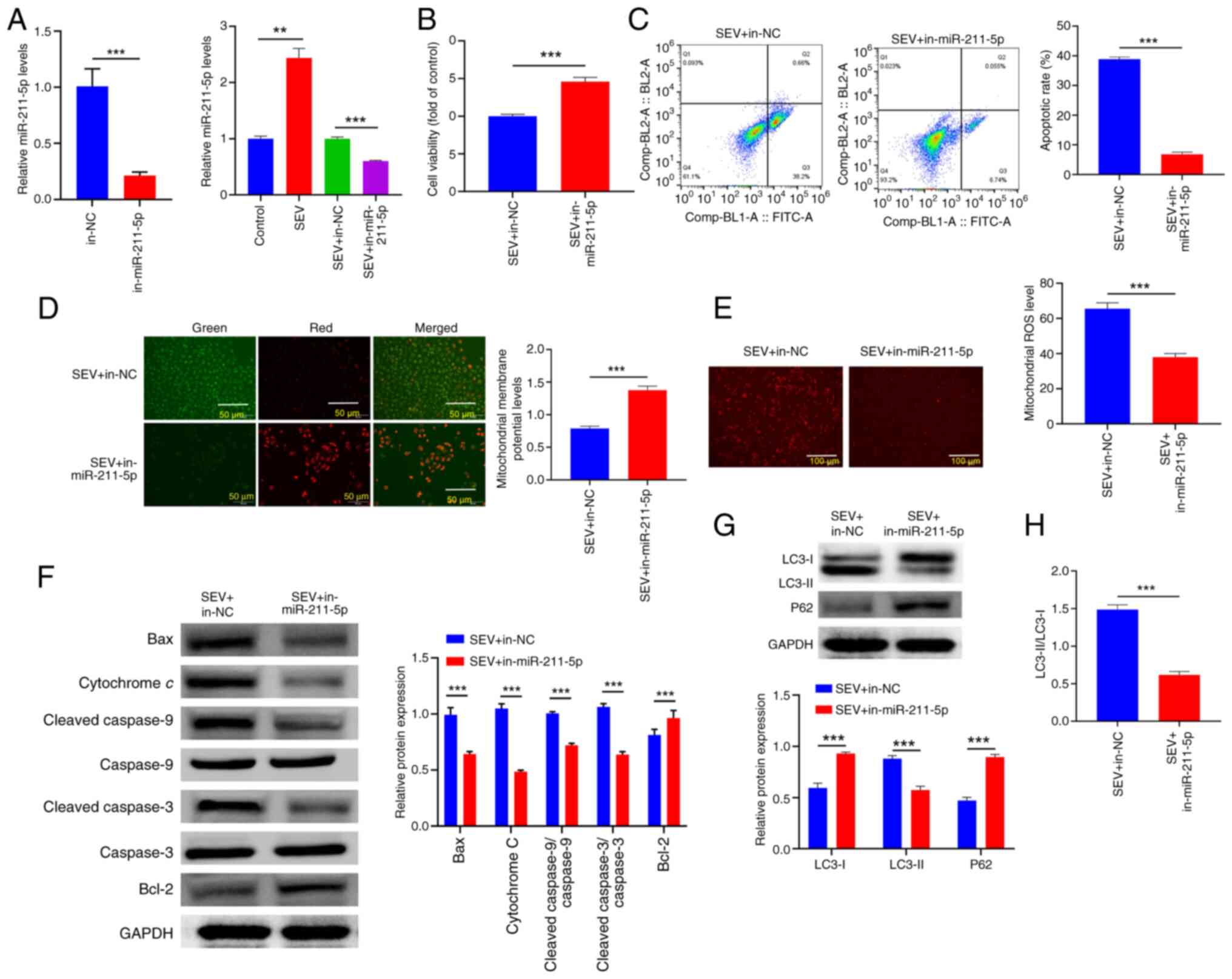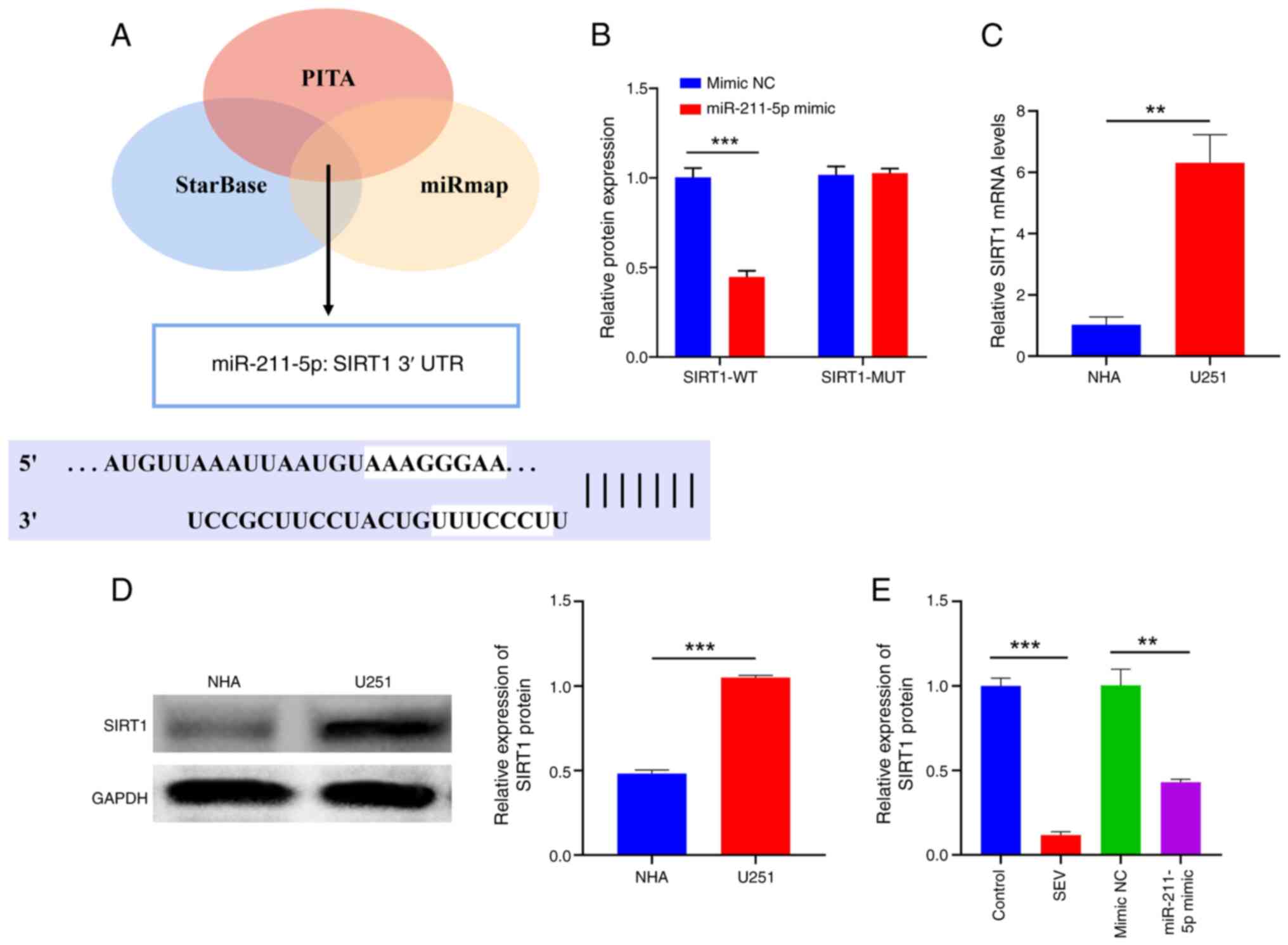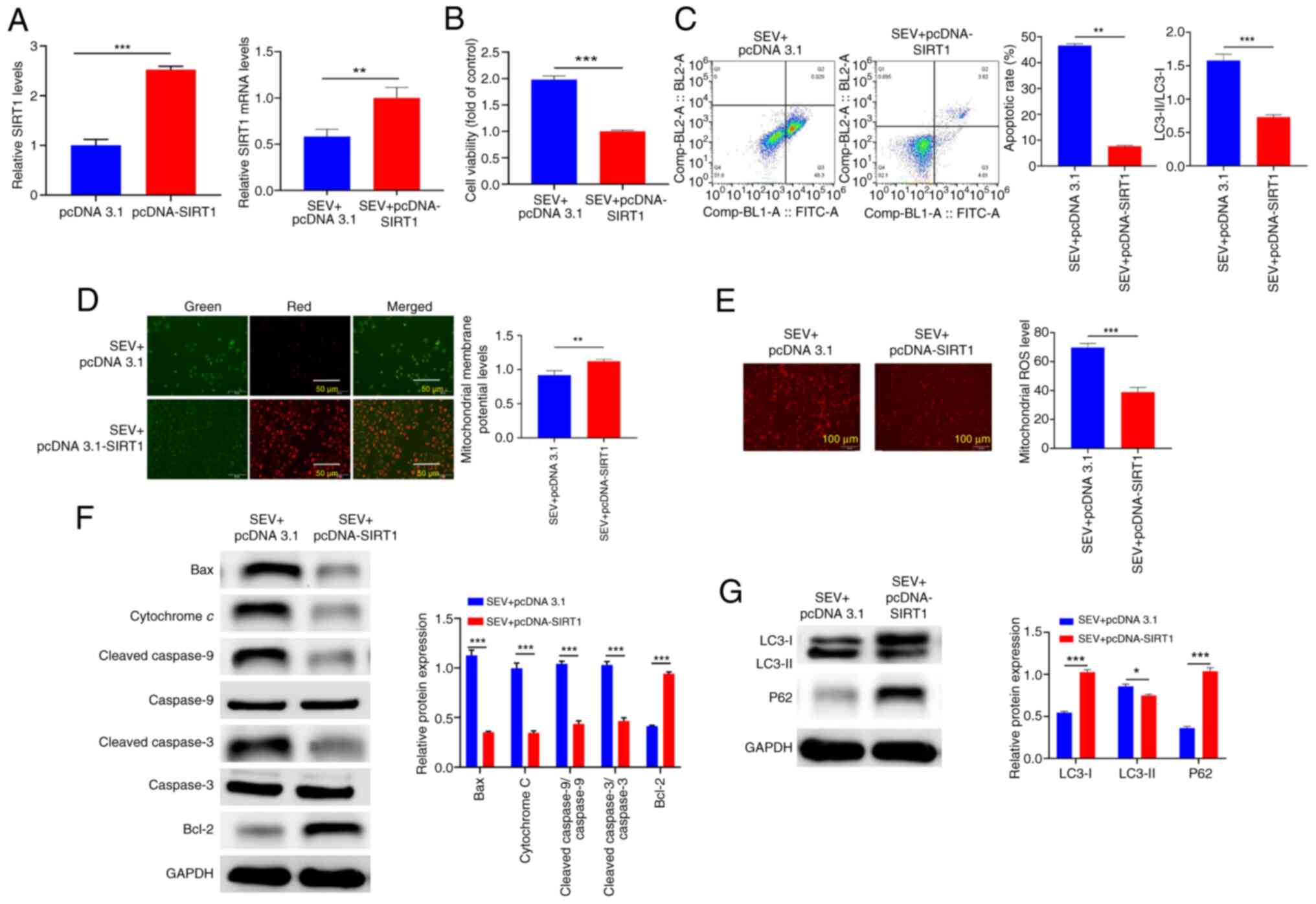|
1
|
Xu S, Tang L, Li X, Fan F and Liu Z:
Immunotherapy for glioma: Current management and future
application. Cancer Lett. 476:1–12. 2020. View Article : Google Scholar : PubMed/NCBI
|
|
2
|
Bush NA, Chang SM and Berger MS: Current
and future strategies for treatment of glioma. Neurosurg Rev.
40:1–14. 2017. View Article : Google Scholar : PubMed/NCBI
|
|
3
|
Kurozumi K, Koizumi S and Otani Y: Gene
therapy and viral therapy for malignant glioma. No Shinkei Geka.
49:608–616. 2021.(In Japanese). PubMed/NCBI
|
|
4
|
Natsume A and Yoshida J: Gene therapy for
high-grade glioma: Current approaches and future directions. Cell
Adh Migr. 2:186–191. 2008. View Article : Google Scholar : PubMed/NCBI
|
|
5
|
Guntuku L, Naidu VG and Yerra VG:
Mitochondrial dysfunction in gliomas: Pharmacotherapeutic potential
of natural compounds. Curr Neuropharmacol. 14:567–583. 2016.
View Article : Google Scholar : PubMed/NCBI
|
|
6
|
Gu J, Rauniyar S, Wang Y, Zhan W, Ye C, Ji
S and Liu G: Chrysophanol induced glioma cells apoptosis via
activation of mitochondrial apoptosis pathway. Bioengineered.
12:6855–6868. 2021. View Article : Google Scholar : PubMed/NCBI
|
|
7
|
Gao H, Liu Z, Xu W, Wang Q, Zhang C, Ding
Y, Nie W, Lai J, Chen Y and Huang H: Pterostilbene promotes
mitochondrial apoptosis and inhibits proliferation in glioma cells.
Sci Rep. 11:63812021. View Article : Google Scholar : PubMed/NCBI
|
|
8
|
Kunadis E and Piperi C: Exploring the
multi-faceted role of sirtuins in glioblastoma pathogenesis and
targeting options. Int J Mol Sci. 23:128892022. View Article : Google Scholar : PubMed/NCBI
|
|
9
|
Alves-Fernandes DK and Jasiulionis MG: The
role of SIRT1 on DNA damage response and epigenetic alterations in
cancer. Int J Mol Sci. 20:31532019. View Article : Google Scholar : PubMed/NCBI
|
|
10
|
Li Y, Chen X, Cui Y, Wei Q, Chen S and
Wang X: Effects of SIRT1 silencing on viability, invasion and
metastasis of human glioma cell lines. Oncol Lett. 17:3701–3708.
2019.PubMed/NCBI
|
|
11
|
Qu Y, Zhang J, Wu S, Li B, Liu S and Cheng
J: SIRT1 promotes proliferation and inhibits apoptosis of human
malignant glioma cell lines. Neurosci Lett. 525:168–172. 2012.
View Article : Google Scholar : PubMed/NCBI
|
|
12
|
Wongkularb S, Limboonreung T, Tuchinda P
and Chongthammakun S: Suppression of PI3K/Akt/mTOR pathway in
chrysoeriol-induced apoptosis of rat C6 glioma cells. In Vitro Cell
Dev Biol Anim. 58:29–36. 2022. View Article : Google Scholar : PubMed/NCBI
|
|
13
|
Zhou C, Liang A, Zhang J, Leng J, Xi B,
Zhou B, Yang Y, Zhu R, Zhong L, Jiang X and Wan D: Depleting ANTXR1
suppresses glioma growth via deactivating PI3K/AKT pathway. Cell
Cycle. 22:2097–2112. 2023. View Article : Google Scholar : PubMed/NCBI
|
|
14
|
Deng X, Vipani M, Liang G, Gouda D, Wang B
and Wei H: Sevoflurane modulates breast cancer cell survival via
modulation of intracellular calcium homeostasis. BMC Anesthesiol.
20:2532020. View Article : Google Scholar : PubMed/NCBI
|
|
15
|
Yun S, Kim K, Shin K, Park H, Lee S, Shin
Y, Paing AS, Choi S and Lim C: Effect of sevoflurane on the
proliferation of A549 lung cancer cells. Medicina (Kaunas).
59:6132023. View Article : Google Scholar : PubMed/NCBI
|
|
16
|
Yu F and Bai T: Sevoflurane activates the
IL-6/HO-1 pathway to promote macrophage M2 polarization and
prostate cancer lung metastasis. Int Immunopharmacol.
113:1093802022. View Article : Google Scholar : PubMed/NCBI
|
|
17
|
Zhao Z, Gao B, Zong X and Gao R:
Sevoflurane impedes glioma progression via regulating
circ_0000215/miR-1200/NCR3LG1 axis. Metab Brain Dis. 36:2003–2014.
2021. View Article : Google Scholar : PubMed/NCBI
|
|
18
|
Loop T, Dovi-Akue D, Frick M, Roesslein M,
Egger L, Humar M, Hoetzel A, Schmidt R, Borner C, Pahl HL, et al:
Volatile anesthetics induce caspase-dependent,
mitochondria-mediated apoptosis in human T lymphocytes in vitro.
Anesthesiology. 102:1147–1157. 2005. View Article : Google Scholar : PubMed/NCBI
|
|
19
|
Cheng S and Cheng J: Sevoflurane
suppresses glioma tumorigenesis via regulating
circ_0079593/miR-633/ROCK1 axis. Brain Res. 1767:1475432021.
View Article : Google Scholar : PubMed/NCBI
|
|
20
|
Wang H, Cheng G, Quan L, Qu H, Yang A, Ye
J, Feng Y, Li X, Shi X and Pan H: Sevoflurane inhibits the
malignant phenotypes of glioma through regulating miR-146b-5p/NFIB
axis. Metab Brain Dis. 37:1373–1386. 2022. View Article : Google Scholar : PubMed/NCBI
|
|
21
|
Zhu J, Xie B, Huang G, Li Y and Liu Z:
Sevoflurane represses the progression of glioma by the regulation
of circ_0037655/miR-130a-5p/RPN2 axis. Metab Brain Dis. 37:787–799.
2022. View Article : Google Scholar : PubMed/NCBI
|
|
22
|
Shen Y, Zhou T, Liu X, Liu Y, Li Y, Zeng
D, Zhong W and Zhang M: Sevoflurane-induced miR-211-5p promotes
neuronal apoptosis by inhibiting Efemp2. ASN Neuro.
13:175909142110350362021. View Article : Google Scholar : PubMed/NCBI
|
|
23
|
Wang Q, Zheng D, Li Y, Zhang Y, Sui R,
Chen Y, Liang H, Shi J, Pan R, Xu X and Sun D: Circular RNA
circ_0001588 sponges miR-211-5p to facilitate the progression of
glioblastoma via up-regulating YY1 expression. J Gene Med.
23:e33712021. View
Article : Google Scholar : PubMed/NCBI
|
|
24
|
Gao C, Shen J, Meng ZX and He XF:
Sevoflurane inhibits glioma cells proliferation and metastasis
through miRNA-124-3p/ROCK1 axis. Pathol Oncol Res. 26:947–954.
2020. View Article : Google Scholar : PubMed/NCBI
|
|
25
|
Edgunlu TG, Avci CB, Ozates NP, Bagca BG,
Celik SK, Boluk A and Ugur B: In vitro effects of propofol on
cytotoxic, apoptotic and PI3K-akt signaling pathway genes on brain
cancer cells. Anticancer Agents Med Chem. 22:356–361. 2022.
View Article : Google Scholar : PubMed/NCBI
|
|
26
|
Zhan X, Lei C and Yang L: Sevoflurane
inhibits cell proliferation and migration of glioma by targeting
the miR-27b/VEGF axis. Mol Med Rep. 23:4082021. View Article : Google Scholar : PubMed/NCBI
|
|
27
|
Qi Y, Guo L, Liu Y, Zhao T, Liu X and
Zhang Y: Sevoflurane Limits glioma progression by regulating cell
proliferation, apoptosis, migration, and invasion via
miR-218-5p/DEK/β-catenin axis in glioma. Cancer Manag Res.
13:2057–2069. 2021. View Article : Google Scholar : PubMed/NCBI
|
|
28
|
Wong RS: Apoptosis in cancer: From
pathogenesis to treatment. J Exp Clin Cancer Res. 30:872011.
View Article : Google Scholar : PubMed/NCBI
|
|
29
|
Su G, Yan Z and Deng M: Sevoflurane
inhibits proliferation, invasion, but enhances apoptosis of lung
cancer cells by Wnt/β-catenin signaling via regulating lncRNA
PCAT6/miR-326 axis. Open Life Sci. 15:159–172. 2020. View Article : Google Scholar : PubMed/NCBI
|
|
30
|
Yang X, Zheng YT and Rong W: Sevoflurane
induces apoptosis and inhibits the growth and motility of colon
cancer in vitro and in vivo via inactivating Ras/Raf/MEK/ERK
signaling. Life Sci. 239:1169162019. View Article : Google Scholar : PubMed/NCBI
|
|
31
|
Kim R, Emi M and Tanabe K: Role of
mitochondria as the gardens of cell death. Cancer Chemother
Pharmacol. 57:545–553. 2006. View Article : Google Scholar : PubMed/NCBI
|
|
32
|
Ordys BB, Launay S, Deighton RF, McCulloch
J and Whittle IR: The role of mitochondria in glioma
pathophysiology. Mol Neurobiol. 42:64–75. 2010. View Article : Google Scholar : PubMed/NCBI
|
|
33
|
Wang A, Zhang B, Zhang J and Wu W and Wu
W: Embelin-induced brain glioma cell apoptosis and cell cycle
arrest via the mitochondrial pathway. Oncol Rep. 29:2473–2478.
2013. View Article : Google Scholar : PubMed/NCBI
|
|
34
|
Feng X, Li J, Li H, Chen X, Liu D and Li
R: Bioactive C21 steroidal glycosides from euphorbia kansui
promoted HepG2 cell apoptosis via the degradation of ATP1A1 and
inhibited macrophage polarization under co-cultivation. Molecules.
28:28302023. View Article : Google Scholar : PubMed/NCBI
|
|
35
|
Xue YY, Lu YY, Sun GQ, Fang F, Ji YQ, Tang
HF, Qiu PC and Cheng G: CN-3 induces mitochondrial apoptosis in
glioma via Ros-mediated PI3K/AKT pathway. Pharmazie. 76:208–214.
2021.PubMed/NCBI
|
|
36
|
Ney PA: Mitochondrial autophagy: Origins,
significance, and role of BNIP3 and NIX. Biochim Biophys Acta.
1853:2775–2783. 2015. View Article : Google Scholar : PubMed/NCBI
|
|
37
|
Bisulli F, Tinuper P, Marini C, Avoni P,
Carraro G and Nobile C: Partial epilepsy with prominent auditory
symptoms not linked to chromosome 10q. Epileptic Disord. 4:183–187.
2002. View Article : Google Scholar : PubMed/NCBI
|
|
38
|
Wang W, Zhang A, Hao Y, Wang G and Jia Z:
The emerging role of miR-19 in glioma. J Cell Mol Med.
22:4611–4616. 2018. View Article : Google Scholar : PubMed/NCBI
|
|
39
|
ParvizHamidi M, Haddad G, Ostadrahimi S,
Ostadrahimi N, Sadeghi S, Fayaz S and Fard-Esfahani P: Circulating
miR-26a and miR-21 as biomarkers for glioblastoma multiform.
Biotechnol Appl Biochem. 66:261–265. 2019. View Article : Google Scholar : PubMed/NCBI
|
|
40
|
Ali Syeda Z, Langden SSS, Munkhzul C, Lee
M and Song SJ: Regulatory mechanism of MicroRNA expression in
cancer. Int J Mol Sci. 21:17232020. View Article : Google Scholar : PubMed/NCBI
|
|
41
|
Chen H, Lin R, Zhang Z, Wei Q, Zhong Z,
Huang J and Xu Y: Sirtuin 1 knockdown inhibits glioma cell
proliferation and potentiates temozolomide toxicity via
facilitation of reactive oxygen species generation. Oncol Lett.
17:5343–5350. 2019.PubMed/NCBI
|
|
42
|
Wang G, Wang JJ, To TS, Zhao HF and Wang
J: Role of SIRT1-mediated mitochondrial and Akt pathways in
glioblastoma cell death induced by Cotinus coggygria flavonoid
nanoliposomes. Int J Nanomedicine. 10:5005–5023. 2015.PubMed/NCBI
|
|
43
|
Peng Y, Wang Y, Zhou C, Mei W and Zeng C:
PI3K/Akt/mTOR pathway and its role in cancer therapeutics: Are we
making headway? Front Oncol. 12:8191282022. View Article : Google Scholar : PubMed/NCBI
|
|
44
|
Xu Z, Han X, Ou D, Liu T, Li Z, Jiang G,
Liu J and Zhang J: Targeting PI3K/AKT/mTOR-mediated autophagy for
tumor therapy. Appl Microbiol Biotechnol. 104:575–587. 2020.
View Article : Google Scholar : PubMed/NCBI
|















